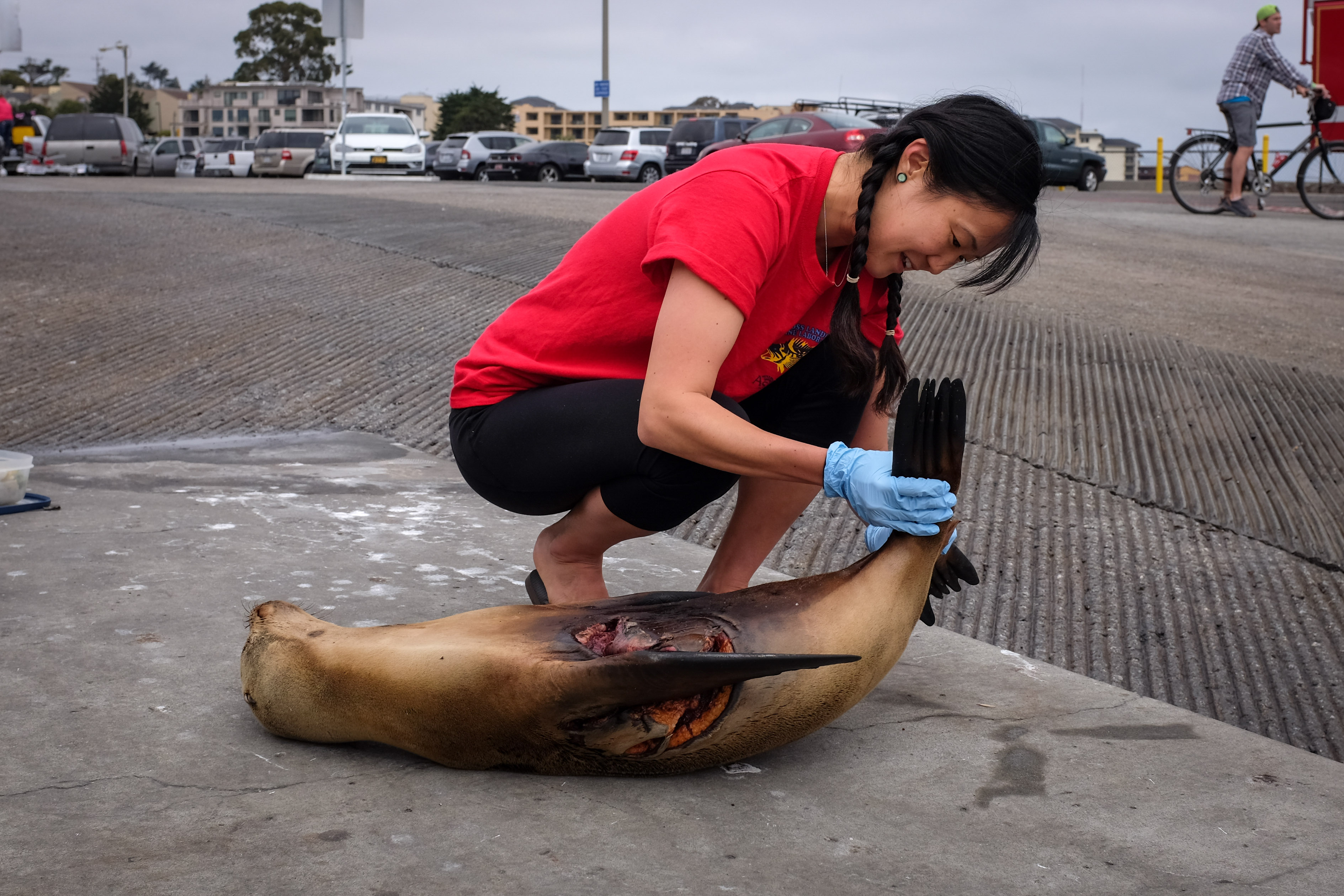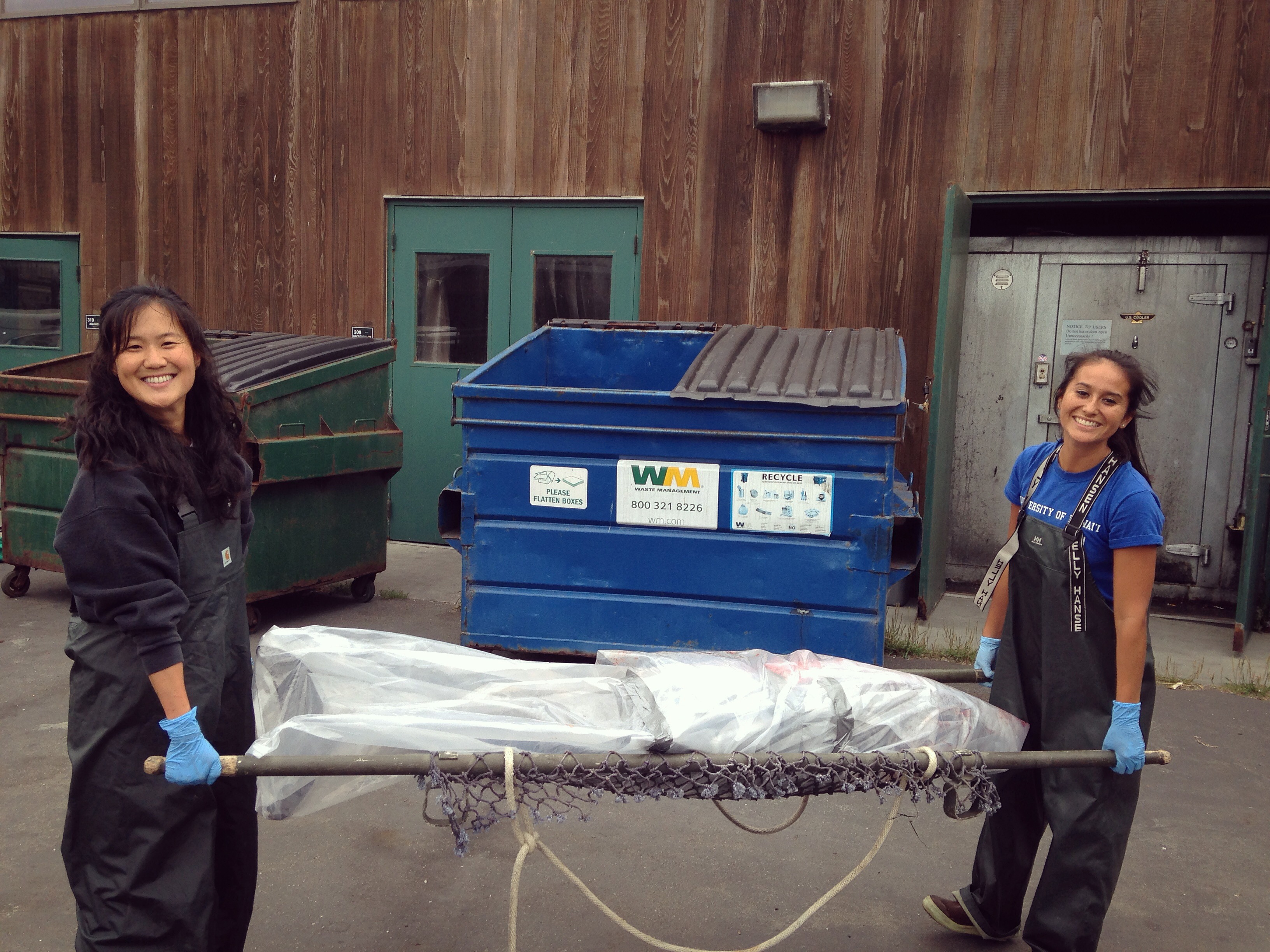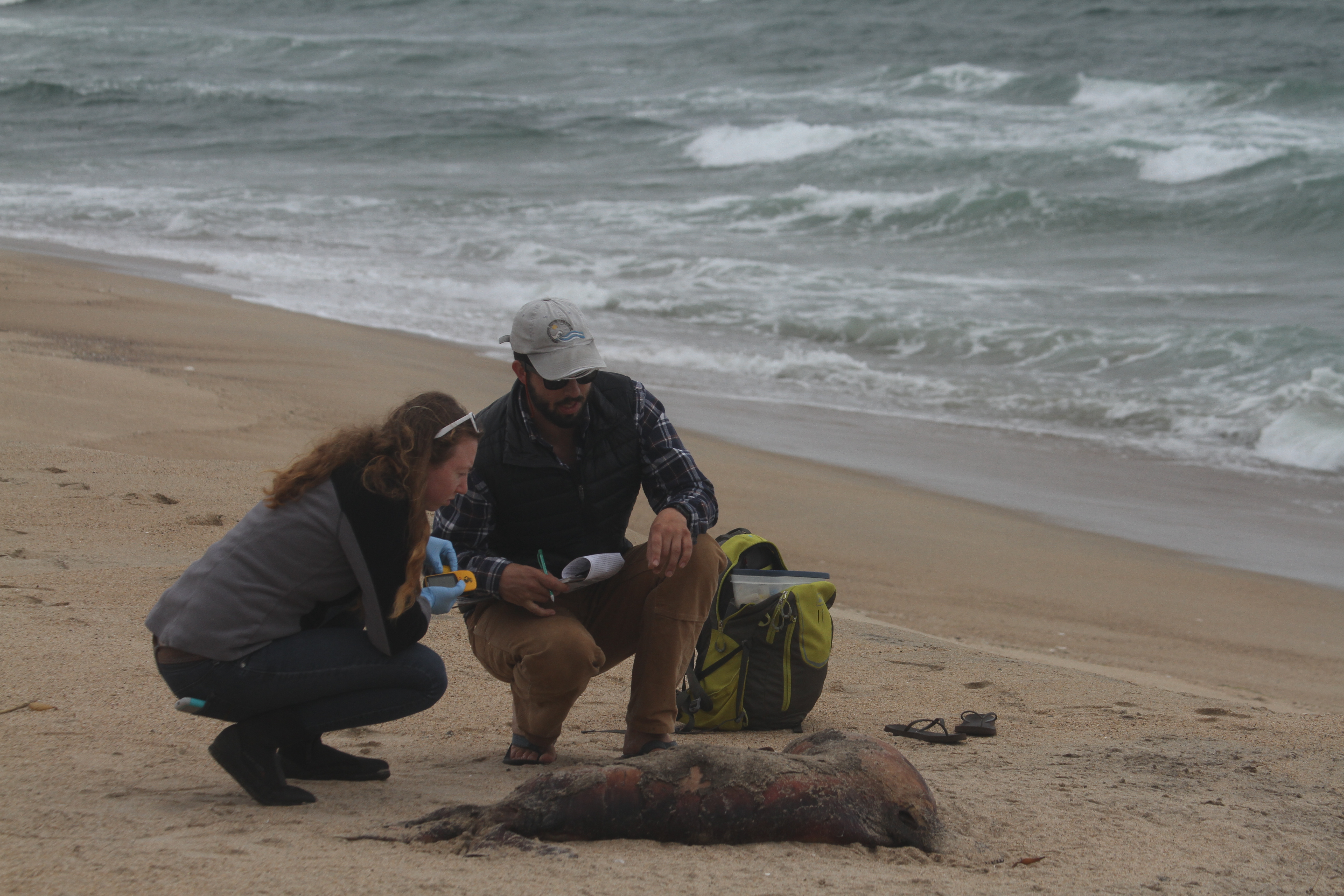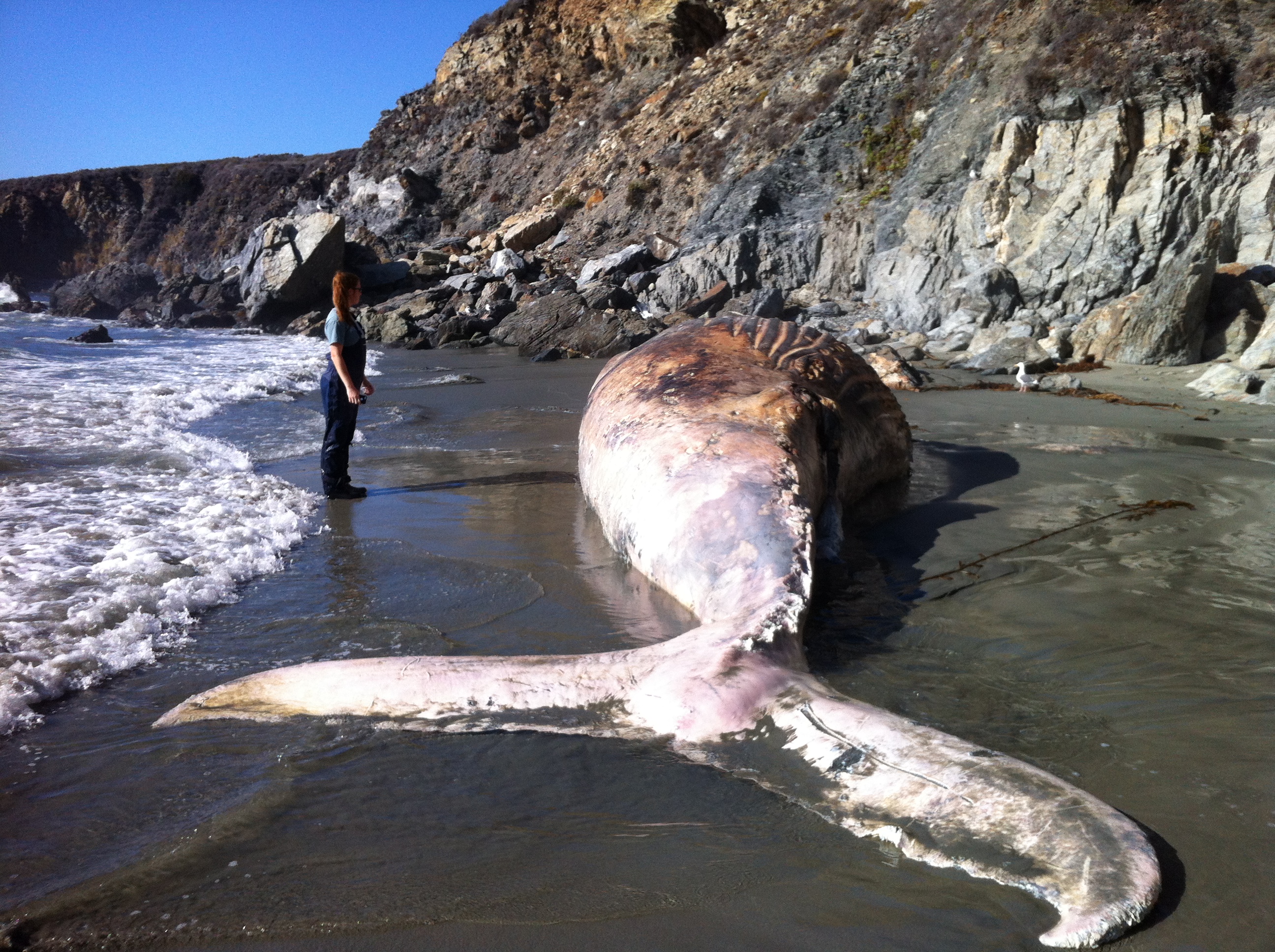 By Sharon Hsu, Vertebrate Ecology Lab
By Sharon Hsu, Vertebrate Ecology Lab
My initiation to the MLML Marine Mammal & Sea Turtle Stranding Network was by fire. Actually, by a 200-pound dead harbor seal that we had to drag up Spanish Bay and load into the backseat of Jenni’s Ford Focus, amongst an onslaught of concerned tourists who had just paid to take a leisurely drive down one of Monterey’s most beautiful roads. Surprisingly, despite all the awkward and concerned staring, only a handful of people approached to ask what we were doing. I assume that, like me, everyone else was too shy to ask what the hell we were doing and will forever wonder about that big blue body bag that was suspiciously getting pulled off the beach by two women in flip-flops.
As official dead-thing-touchers (yes, we have the permits to do so – and yes, you have to have a permit to do so), we find that only a few brave individuals will approach to ask questions about what we are doing, and I can only assume that others might be left wondering why two people in a kayak were sampling blubber from that dead humpback whale off Lover’s Point or putting that dead sea lion pup into a plastic bag in front of a class of baby kayakers on Del Monte Beach. So here are the answers to the top six questions we get:
Questions 1-3: What is the Stranding Network? Who are we? And why are we always touching dead things?
The Stranding Network – more formally, the Marine Mammal Stranding Network, is a part of the United States Marine Mammal Health and Stranding Response Program, whose aim is to recover and document dead stranded marine mammals along the Monterey County coastline. We are mostly graduate students in the Vertebrate Ecology Lab at Moss Landing Marine Labs, and we rely on you, the public, to report dead marine mammals because we are few, and the beaches of Monterey County are many. We touch the dead things you report to us in order to document life history, investigate final cause of death, and collect specimens for anatomical investigation.

Question 4: Why did that thing die?
Monterey Bay is a renowned home and feeding ground for many species of marine mammals including harbor seals, sea lions, bottlenose dolphins, and humpback whales. As such, it is normal – and sometimes abnormal – for dead marine mammals to wash up on the beaches. It’s a natural process – nature at its finest. To be honest, if you ask us this question while we are on the beach, our guess will be as good as yours. We can only perform an external exam during the initial finding, and unless there is obvious physical trauma, there are a thousand and one ways this animal could have died. We can’t reach any conclusions about the final cause of death until we are able to perform a necropsy in the lab.
Question 5: Will you take this animal off the beach?
Maybe. First and foremost: we are not responsible for removal. However, if an animal is reported quickly and we are able to get to it before it is too decomposed (usually meaning within 24 hours of death), we will take it into the lab where we can investigate the cause of death with a necropsy and collect tissue samples for research purposes. Unfortunately, if an animal is already in an advanced state of decomposition, we most likely will not be stinking up the back of Jenni’s car with it. If you are concerned
about a dead animal that has been responded to but not removed, you can contact the city.

Question 6: What do I do if I find a dead marine mammal?
Who you gonna call? Not Ghostbusters…. They can’t help you in this case. But if you are on any beach in Monterey County, you can call us – the Marine Mammal Stranding Network: (831) 771-4422. If we don’t answer the phone (because once again, there are only a few of us and we may be on another call), please leave us a message! There is someone on call every day of the week. Some information that is helpful for us:
- Identification of the animal (if you don’t know the species, even color and size are helpful!)
- Exact location of the animal (which beach were you at? Asilomar, Big Sur, and Fort Ord are very big beaches… are there any specific landmarks I should look for when I go to look for this animal?)
- Your name and telephone number (I often get lost when I am following directions, so I may want to call you and get more specific directions on this morbid scavenger hunt).
In the case of a live stranding (for an injured or otherwise live animal), you can call The Marine Mammal Center: (831) 633-6298.

The next time you are enjoying one of the jewels of Monterey’s coast and you see someone putting on latex doctor gloves and prodding some unsightly lump on the beach, feel free to come over and ask us what we are doing.

